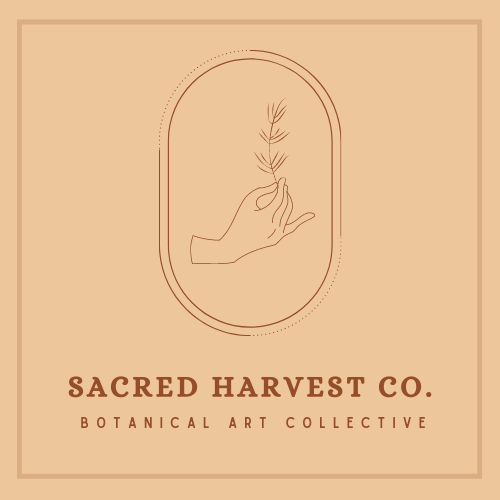Violet (Violoa sororia)
- Sacred Harvest

- Mar 28, 2019
- 2 min read
Updated: Apr 4, 2019
Violets are welcome “weeds” in our garden. In fact, the common blue violet—my particular brand of violet garden guest—is native to these parts, which is more than I can say for myself!

The common blue violet (Viola sororia, Violaceae) is native to most of central and eastern North America. It is a common sight in lawns, gardens, sidewalk cracks and along trailsides. The common blue violet is typically considered a “weed” because of its relative ease in adapting to human disturbance, but it pushes the definition of weed because it has been on this continent for a very long time. The leaves and flowers of the common blue violet, along with many other species, are edible and medicinal. The “confederate violet” is an escaped cultivar (cultivated variety) of Viola sororia—it has white flowers with blue streaks and is a common inhabitant of lawns in the southeastern United States.
Violets leaves are also medicinal, with a soothing mucilaginous property. They are anti-oxident, anti-inflammatory, and a blood cleanser. They are good for coughs and colds, and can be made into a violet leaf and honey cough syrup.
Violet is cooling and moistening, and is used internally as a lymphatic stimulant. It is taken as a tea or syrup, and can also be eaten for its medicine. The exact dosage is not especially important since it can safely be consumed in large quantities. As a gentle food herb, violet is generally safe for elders, youngsters, and people who are taking pharmaceuticals.
Violet's heart-shaped leaves and characteristic irregular flowers are a familiar sight for most of us. The leaves typically bear rounded teeth and are smooth. The flowers have a little rounded tail if you turn them over. Children seem to have a special affinity for this charismatic group of plants; perhaps because its bright flowers are well within their reach. Violets actually have many look-alikes, many of which are inedible or poisonous, so only harvest them when the flowers are present and you are 100% sure that you have a violet.

I enjoy violet leaves and flowers in salad, pesto and in sandwiches and wraps. The roots of most violet species can cause nausea and vomiting, and should not be eaten. The leaves and flowers can be harvested with scissors in a “haircut” style. Violet can be harvested multiple times throughout the spring until the leaves become too fibrous. It will often make a comeback in the fall, with a flush of tender new growth. Violet leaves can be sautéed or steamed. I also like to stir them into soups as a nutrient-dense thickener. The flowers make a lovely garnish—we sprinkle them on salads and add them to cakes and pancakes. Violet flowers are also beautiful when candied or frozen into ice cubes.
.png)

Comments